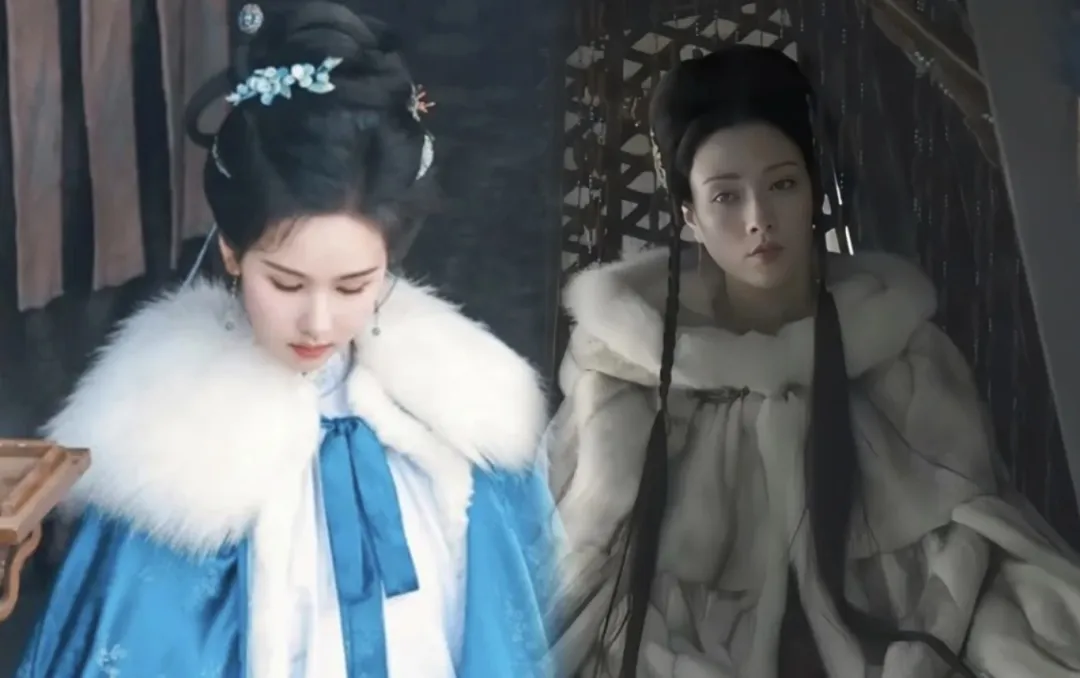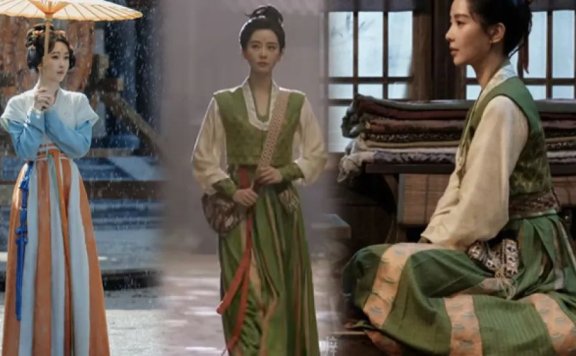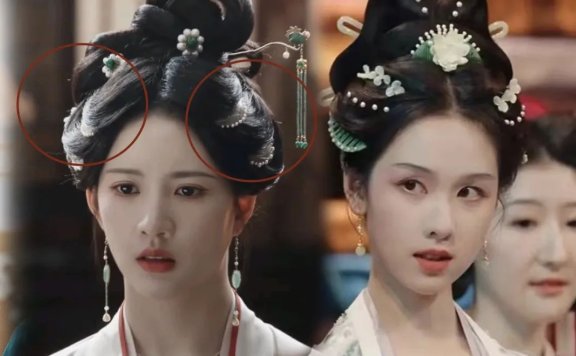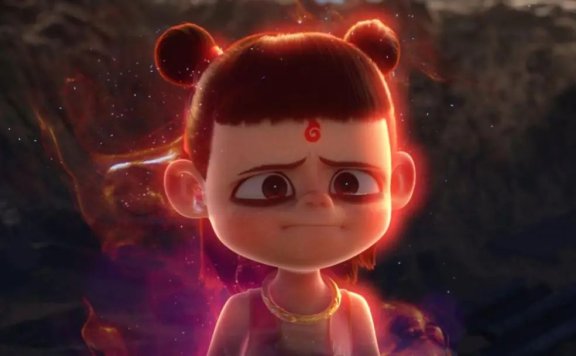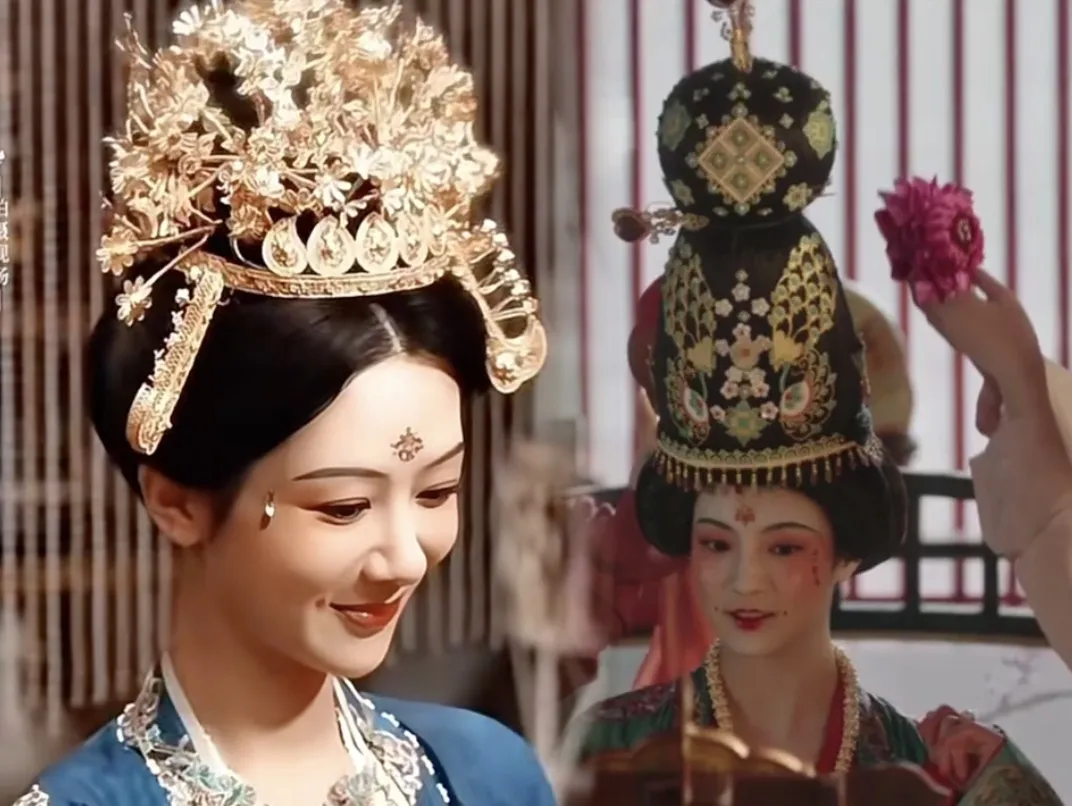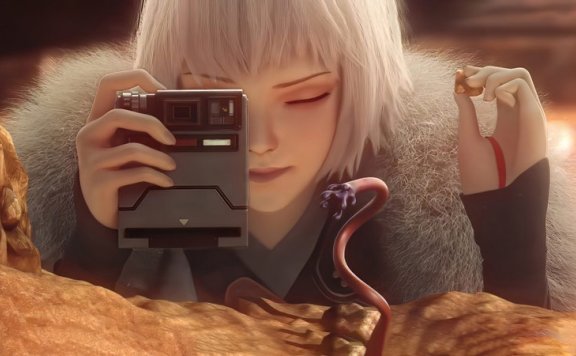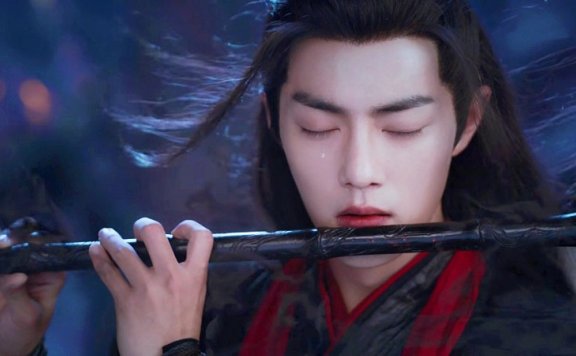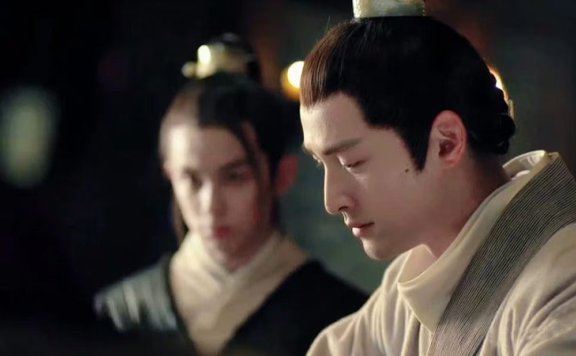Article
搜索结果:
-
Yang Zi's Hanfu Outfits for Lantern Festival
Yang Zi, the renowned Chinese actress, recently shared her Hanfu photos to celebrate the Lantern Festival, sparking widespread admiration online. Fans particularly praised the outfits for their everyday wearability. The Ming Dynasty-Inspired Hanfu Yang Zi showcased two distinct Aoqun (袄裙) styles, a common attire for women during the Ming Dynasty. The first was a pink cross-collar top paired with a gray pleated skirt, while the second featured a green front-closing top with subtle red accents for a contrasting effect. Both looks highlighted the elegance and versatility of Ming-era fashion. Historical Color Palettes The pink and gray combination reflects a timeless aesthetic, popular even during the Tang and Song dynasties. Notably, the Yangfei (杨妃色), a delicate pink hue derived from mineral pigments, adds a touch of historical charm. Similarly, soft greens and watery blues were favored for their understated sophistication. Modern Adaptations For a more formal occasion, Yang Zi’s standing-collar long coat with a Mamian skirt (马面裙) exemplifies Ming-era grandeur. However, the gray-toned ensemble proves that Hanfu can be adapted for daily wear with muted colors and thoughtful accessories. Styling Tips Traditional Hanfu often employs the 'clothing-over-skirt' technique, which, though less slimming than the reverse, offers a flattering fit for various… -
Most People Wear Fur Wrong
Have you ever noticed that in both historical dramas and everyday fashion, fur coats or cloaks are usually worn with the fur side out? But does this really keep you warm? It turns out, most people might be wearing fur incorrectly. The truth is, the way fur is worn depends on its purpose and setting. Ancient paintings reveal that for warmth, people wore fur with the hair side against their skin, covered by an outer fabric layer. Only a bit of fur peeked out at the collar, serving both insulation and decoration to showcase the garment's quality. In contrast, ancient nobility often flaunted full or partial fur pieces indoors to display wealth and status, while hunters wore small fur patches to signify their profession. Today, however, fur is predominantly worn hair-out for aesthetics, regardless of practicality or social standing. Historically, fur worn externally has always been a luxury statement rather than for warmth. Note: We advocate for animal welfare and encourage using faux fur alternatives. Fur Garments in Ancient China In ancient China, fur garments were called Qiu Yi (裘衣), ranging from affordable to extravagant. They appear in poetry, like Li Bai's line about 'a dappled horse and a thousand… -
Ancient Striped Dresses in Tang Dynasty
In historical dramas like Kill My Sins, we often see actresses like Liu Shishi (刘诗诗) wearing striped dresses that resemble modern fashion. But did such striped dresses really exist in ancient times? Was the Tang Dynasty that ahead of its time? The answer is yes. These narrow-striped dresses were popular from the early Tang Dynasty to the Wu Zhou period, with origins tracing back to the Han and Jin dynasties. Interestingly, these stripes weren’t printed but were meticulously sewn together. This visual technique to elongate the figure wasn’t a modern invention—our ancestors had already mastered it for a sleek, fashionable look. Their aesthetic was truly scientifically slimming. The Art of Poqun (破裙) Poqun doesn’t mean torn dresses but refers to paneled skirts made by stitching separate fabric pieces. These skirts, dating back to the Han and Jin dynasties, were discovered in the Bijiatan Tomb. They could be pleated or layered, showcasing remarkable flexibility in design. Color Combinations Poqun featured both monochromatic and contrasting colors, the latter called Jianse Qun (间色裙). Early Tang murals often depict red - white, black - white, or blue - white stripes, along with red - blue combinations. Ultra - Narrow Stripes By the early Tang… -
Satomi Ishihara Wears Hanfu?
In the Japanese drama The Great Buddha Opens His Eyes, Satomi Ishihara's costume has sparked discussions online. Many pointed out that her hairstyle resembles the popular style of early Tang Dynasty in China, rather than the Tenpyo era in Japan. The answer is clear: this is the Shuang Ji Ji (双髻髻), a hairstyle popular from the Sui to early Tang Dynasty. It features two looped buns on the head, commonly worn by children and maids. Similar styles can be found among Chinese artifacts preserved in the Shosoin Repository. Not just the hairstyle, but even the eyebrows match the Tang Dynasty's aesthetic. Additionally, the Mei Ban Hua Dian (梅瓣花钿, plum - petal forehead decoration) and Mian Ye (面靥, dimple makeup) on the sides of the lips also draw inspiration from Tang fashion. In the Chinese historical drama Guo Se Fang Hua (国色芳华), actress Yang Zi wore this hairstyle, meticulously recreated based on murals and relics. The Shuang Chui Ji (双垂髻, double - drop bun) also appeared, a style beloved by Tang Dynasty noblewomen and often paired with men's round - collar robes. The drama references elements like the Mian Fu (冕服, emperor's ceremonial robe), Shi Er Zhang Wen (十二章纹, twelve imperial… -
The Unique Charm of Zhang Yuxi's Hairstyle
In the dramas The Palm and National Beauty and Fragrance, Zhang Yuxi's hairstyle stands out as distinctly different from others. Is this truly a Tang Dynasty style? The answer is yes. This hairstyle is called Fanwan Ji (反绾髻), a popular hairdo during the early Tang Dynasty. Its most notable feature is the strand of hair that curves around the forehead, formed by pulling hair from the back of the head to the front, hence the name Fanwan Ji. This hairstyle is also known as Leyou Fanwan Ji (乐游反绾髻). Leyou refers to Leyou Yuan (乐游原), a scenic spot in Chang'an, the capital of the Tang Dynasty. Located in the southern part of the city, it was a favorite destination for nobles and literati due to its breathtaking views and elevated terrain. The hairstyle's name reflects its free - spirited and elegant nature, making it a popular choice for women during outings. As described in Gu Kuang's poem Song of the Acrobat, "The girl from Wanling splits the air with her hands, the long pole stands horizontally as she moves up and down... her Fanwan Ji swirls like the wind." This highlights the hairstyle's beauty and practicality. Unlike other elaborate Tang Dynasty… -
The Meaning Behind Nezha and Ao Bing's Forehead Designs
In the animated film Nezha: The Devil's Birth, both Nezha and Ao Bing sport distinctive forehead designs. Many of us might recall having a similar dot on our foreheads during childhood. But what's the story behind this shared symbol? The forehead decoration is known as Huadian (花钿), and it's not unique to this film. Historical depictions of Nezha often feature similar designs. In fact, many of us had these dots as children. Huadian has been popular throughout Chinese history, especially among women and children. These decorations came in various styles, colors, and materials, ranging from flat to three - dimensional. During the Song Dynasty, some were even made of pearls for added elegance. Why Do Children Wear Huadian? While it's understandable why women adorned themselves with Huadian for beauty, why did children wear them? One folk belief suggests that marking the center of the forehead symbolizes the opening of wisdom. A traditional rite of passage called Kaibi Li (开笔礼), or "Breaking the Seal," marks a child's entry into learning. Using cinnabar (a traditional protective substance) on the forehead combines the idea of warding off evil with the hope for intelligence. A more plausible explanation ties Huadian to the Dragon Boat… -
The Art of Ancient Chinese Yunbin Hairstyles
In modern times, people often think of bangs as the only way to decorate the forehead. However, in ancient China, there were various methods such as sticking Huadian (花钿), wearing forehead scarves, headbands, or applying forehead decorations. Today, let's talk about Yunbin (云鬓), a hairstyle made directly from one's own hair to cover the hairline. Yunbin, commonly seen in the Song Dynasty, is also known as Yun Jian Qiao E (云尖巧额). It involves curling a few strands of hair on the forehead or temples to create a layered, cloud-like effect. This not only helps to cover the hairline and temples but also adds a touch of elegance and grace to a woman's appearance. As described in The Ballad of Mulan: "She combs her cloud-like hair by the window and adorns her forehead with yellow flowers." According to Feng Chuang Xiao Bu from the Song Dynasty, "During the Chongning period, people preferred large bangs and square foreheads. By the Zhenghe and Xuanhe eras, tight buns hanging to the shoulders were in vogue. After the Xuanhe period, Yun Jian Qiao E and golden phoenix hairpins became popular." This shows how ancient Chinese used their own hair to create various styles, including Yunbin,… -
The Truth About Wedding Attire Colors in Ancient China
Did ancient Chinese brides really wear red for marrying down and green for marrying up? The short answer is no. This widespread myth, often perpetuated by historical dramas, has little basis in actual Song Dynasty customs or broader ancient Chinese traditions. Let's debunk these misconceptions and explore what people truly wore for weddings in imperial China. Official Attire Dictated Wedding Outfits During the Song Dynasty (960 - 1279 AD), wedding attire followed strict sumptuary laws rather than arbitrary color rules. Officials wore their rank - appropriate court robes - with green representing the lowest rank for men. The Yan Yi Yi Mou Lu historical records confirm newly appointed jinshi (进士, scholars who passed imperial exams) received green robes. Women of nobility wore qing (青, dark blue - green) ceremonial dresses, considered more prestigious than ordinary green. The Prestige of Qing (Dark Blue - Green) Contrary to modern confusion, qing and lü (绿, ordinary green) were distinct colors in ancient China. As documented in the Wen Xian Tong Kao historical text, the Tang and Song courts used purple, crimson, green, and qing to denote official ranks. Noble women's wedding garments like the ju yi (鞠衣), hua dian li yi (花钿礼衣), and… -
Why Nezha Always Has Bun Hairstyle?
The recent release of 'Nezha: The Devil Boy's Havoc' (Nezha 2) has reignited discussions about the iconic bun hairstyle that seems to define Nezha's appearance across various adaptations. Is it a coincidence or a stereotype? Netizens joke: 'Nezha can change his fate, but not his hairstyle.' The origin of the 'bun hairstyle' can be traced back to ancient China, where it was one of the many hairstyles popular among women. Its roots lie in the 'double bun' style, which was highly fashionable during that era. Excavated pottery figurines vividly depict the societal admiration for delicate feminine beauty. This trend even influenced ancient Japanese fashion, particularly during the Nara period. Historical dramas like NHK's 'The Great Buddha Opening Eyes,' set in Nara, showcase characters adorned with Tang Dynasty - inspired double - bun hairstyles. In Chinese history, children's double - bun hairstyles were referred to as 'Zongjiao.' Ancient texts emphasize the importance of preserving one's hair as a sign of filial piety. From around eight or nine years old, Han children, regardless of gender, would part their hair into two small buns resembling horns, hence the name 'Zongjiao.' Girls' buns were often styled like branching twigs, known as 'Yaji,' which led… -
The Fashion of Wei Shang in Ancient Chinese Costumes
In the historical drama 'Guo Se Fang Hua,' many viewers noticed that Dong Jie's character, Feng Xiaoyi, stood out with a unique accessory—a piece of fabric wrapped around her chest, commonly referred to as 'Wei Shang' (围裳). This ancient fashion element, often humorously called 'butt curtain' in modern slang, has a rich history and cultural significance. What is 'Wei Shang'? 'Wei Shang,' which translates to 'surrounding skirt,' was a versatile garment in ancient China. It could be a single piece of fabric, multiple panels sewn together, or even a pleated design, depending on the fashion trends of the time. Scholars also refer to it as 'Yao Qun' (腰裙), described in 'The Dictionary of Ancient Chinese Clothing' as a short skirt worn around the waist. Research by Ruan Li from Shanghai University further defines it as a wide band tied around the hips, often adorned with decorative knots or beads. This accessory was not just for aesthetics; it served practical purposes too. In winter, it could be padded with cotton for warmth, while in summer, lighter fabrics were used for breathability. The 'Wei Shang' added layers and dimension to outfits, much like the tiered designs of Western cake dresses. Fashion Trends… -
Ancient Ear Muffs: A Fashionable Winter Accessory
Did you know that ear muffs existed in ancient times? Recent historical dramas like "Tian Geng Ji" and "Jin Nang Miao Lu" have showcased these fluffy ear coverings, which bear a striking resemblance to the ones we use today. The answer is simple: ancient people naturally didn’t want their ears to freeze in winter, so they invented these accessories—though they were primarily used by wealthier families. Names in Ancient China In ancient China, these ear-warming accessories had various names, such as Er Nuan (耳暖), Er Yi (耳衣), and Hu Er (护耳). During the Tang Dynasty, they were called Er Yi (耳衣), specifically designed to protect ears from winter’s harsh cold. The poet Li Kuo once wrote: "The golden belt is heavy, the iron-sewn Er Yi is cold." The word "iron" here was later annotated as "brocade," suggesting that these ear covers might have been made of luxurious brocade or fur. While their exact design remains unknown, murals and figurines hint at two styles: one with long fur strips hanging from the ears and another with fabric covers tied at the sides. Evolution in the Ming Dynasty By the Ming Dynasty, a new iteration called Nuan Er (暖耳) emerged and was… -
The Only Authentic Look in Princess Agents 2
Recently, the lead actress's look in Princess Agents 2 was revealed, featuring Huang Yangdiantian wearing a double-loop hairstyle known as Shuang Huan Wang Xian Ji, adorned with golden Buyao (步摇) hairpins. Netizens commented that this might be the only look in the series that closely resembles the historical setting of the story. Although Princess Agents is a fictional tale, its backdrop is closest to the Northern Zhou Dynasty of the Northern and Southern Dynasties period, given the prominence of aristocratic families like the Yu Wen clan. During this era, Buyao hairpins were a symbol of status and nobility, which explains why fans are praising this particular look. Buyao is a general term for hair ornaments that sway with movement. It gained popularity among the upper class during the Han and Jin Dynasties, becoming a signature accessory for noblewomen. Historical texts like Shi Ming · Shi Shou Shi from the Han Dynasty describe Buyao as "hairpins with dangling pearls that sway with each step." The Hou Han Shu · Yu Fu Zhi also mentions Buyao as part of the empress's ceremonial attire. These ornaments varied in design, from standalone hairpins to elaborate crowns, often decorated with motifs like trees, flowers, leaves,… -
The Intricate Wedding Crowns in Historical Dramas
In the historical drama Guose Fanghua, the wedding crowns have sparked much discussion due to their opulence and intricate details. While they appear to be modeled after historical artifacts, a closer examination reveals some discrepancies. This article delves into the fascinating world of these crowns, exploring their origins, design, and the historical accuracy behind them. The Prototype: Empress Xiao's Crown The crown worn by the character He Weifang, played by Yang Zi, seems to be inspired by the crown of Empress Xiao from the Sui Dynasty. Over time, the design evolved through the Tang Dynasty, retaining elements like the Chaidian (hairpins) and Bobin (side ornaments) as markers of status. However, the crown's design in the drama doesn't perfectly align with the character's social standing, as historical records indicate that such crowns were reserved for high-ranking noblewomen. During the Tang Dynasty, women favored high buns, with the height and complexity of the hairstyle reflecting their social status. Noblewomen wore elaborate hair ornaments, including gold hairpins, in symmetrical pairs for formal occasions. The number of Huashu (floral ornaments) and Huadian (floral hairpins) varied by rank, with empresses wearing twelve and first-rank noblewomen wearing nine, decreasing by rank. The Components of the Crown… -
The Song Dynasty Women's Head Coverings
In various historical dramas like 'Secret Records of the Brocade Bag' and 'Rain Clouds Over Ink', we often see women wearing a piece of cloth over their heads when going out. These women weren't necessarily heading to weddings - so what was the purpose of this head covering? The answer lies in what was known as the 'Gaitou' (盖头) during the Song Dynasty. The Song Dynasty inherited many systems from the Tang Dynasty, including its clothing customs. According to Zhou Hui's 'Qingbo Magazine': 'Scholars wore cool robes when riding horses, while women walking in public places covered half their bodies with square purple silk veils, commonly called Gaitou, which followed the Tang Dynasty Weimao (帷帽) tradition.' This reveals that the Song Dynasty Gaitou evolved from the Tang Dynasty Weimao. However, there were differences between the two. As noted by scholar Shen Congwen: 'The Weimao was a stiff hat with a hanging net curtain,' essentially a bamboo hat with a black net. The Gaitou was simpler - just a square piece of fabric, often made of silk ('Luo'), that could cover half the body. Shen Congwen wrote: 'The Gaitou was indeed a common head covering for Song Dynasty women.' Gao Cheng… -
Why Did Tang Dynasty Women Wear Low-Cut Dresses?
When observing Tang Dynasty paintings, it's hard not to notice the low-cut necklines of women's dresses, some even revealing enough to make modern viewers blush. This fashion trend was widespread throughout the Tang era. What caused this phenomenon? The answer lies in a combination of factors, including economic prosperity, increased female confidence during Empress Wu Zetian's reign, and cultural exchanges with minority groups (such as the adoption of Hu clothing styles). However, climate played an equally crucial role. Renowned meteorologist Zhu Kezhen, in his study "Preliminary Research on Climate Change in China Over the Last 5,000 Years," noted that the Tang Dynasty experienced a warm period. The capital, Chang'an (modern-day Xi'an), located at a latitude similar to present-day Nanjing, endured sweltering summers with average annual temperatures exceeding 20°C. Even emperors sought refuge in cooler northern regions, and bestowing ice upon officials became a prized reward. This climate directly influenced Tang fashion, leading to the popularity of round-neck, U-neck, and cross-collar designs, as well as short sleeves and lightweight silk fabrics. From early to high Tang periods, low-cut dresses with necklines plunging to the chest—often seen in blush-inducing murals—became fashionable. Poets like Bai Juyi (Feet scorched by steaming earth, backs burned… -
Li Xian's Tang Dynasty Wardrobe
In the drama 'Guo Se Feng Hua,' Li Xian's character, Jiang Changyang, showcases a different outfit in almost every scene, earning the title 'Tang Dynasty version of a man's wardrobe.' Li Xian himself remarked that the costumes in this series are the most 'flamboyant' he has ever worn. The attire of Jiang Changyang, played by Li Xian, is particularly notable for its intricate patterns, such as Tuan Ke (团窠) and Lian Zhu (联珠) motifs. These designs are artistic treasures unique to the Tang Dynasty, which absorbed and refined elements from foreign cultures. The 'Ling Yang Gong Yang' Pattern One of the most iconic patterns is the 'Ling Yang Gong Yang' (陵阳公样), a term that refers to a category of Tang brocade designs. The 'designer' behind these patterns was Dou Shilun, a renowned silk weaving expert of the Tang Dynasty. Dou Shilun created over a dozen motifs, many of which featured symmetrical designs incorporating elements like phoenixes, sheep, horses, deer, and unicorns. These patterns often combined influences from Persian and Sogdian cultures, such as circular Tuan Ke motifs surrounded by Lian Zhu (联珠) borders, adorned with various flora and fauna. In recognition of his contributions, Dou Shilun was ennobled as 'Ling… -
Top 10 Chinese Anime on Tencent You Can't Miss
Tencent Video and Tencent Animation have become hubs for China's animation gems, blending ancient myths, futuristic sagas, and everything in between. Here are 10 must-watch Chinese anime series that redefine what Donghua can be. Battle Through the Heavens 斗破苍穹 At first glance, Battle Through the Heavens fits squarely into the classic cultivation formula: a fallen genius named Xiao Yan sets out to regain his status and surpass his former self. But unlike many shows where power-ups come too easily, BTTH is unusually committed to making every stage of Xiao Yan's progress feel earned—and hard-won. The early loss of his talent isn't just a narrative hook; it forces him to rely on intellect and resourcefulness rather than sheer force. When he gains a mysterious old mentor, Yao Lao, their relationship doesn't just serve as a shortcut for instant power. Yao Lao is more like a chessmaster, constantly reminding Xiao Yan that in this world, raw power alone won't keep you alive—reputation, alliance, and careful timing matter just as much. One of the most distinctive features of this show is its emphasis on alchemy. In many xianxia stories, alchemy is just background dressing—here, it becomes a central tool of conflict and control.… -
Top 9 Must-Watch Chinese Anime on Bilibili
Bilibili has become a hub for high-quality Chinese animation, offering diverse genres and fresh storytelling. This list highlights standout titles that resonate with both casual viewers and anime enthusiasts, prioritizing engaging plots and unique styles over abstract praise. The Outcast 一人之下 The Outcast (2016-present) is a Chinese animated series blending urban fantasy, dark comedy, and martial arts. With 5 seasons so far, it follows Zhang Chulan, a college student dragged into the hidden world of "Heteromorphs"—people with supernatural abilities—after his estranged grandfather’s death. Teaming up with the enigmatic, deadpan Feng Baby (who wields kitchen knives and an immortal past), he uncovers family secrets while dodging rival factions seeking ancient power. The show stands out for balancing gritty action with quirky humor. Fight scenes mix traditional Chinese martial arts (like Baguazhang) with creative superpowers—a villain manipulates chess pieces as weapons; another controls paper. The animation, while not ultra-polished, delivers kinetic choreography and distinct character designs, especially in later seasons. Character dynamics drive the story. Zhang Chulan evolves from a cynical slacker to a cunning strategist, using wit rather than brute strength. Feng Baby’s emotionless demeanor hides tragic depth, and villains like the scheming Wang Ye feel layered—driven by ambition, not pure… -
The Untamed: What If the Villain Was Never Wrong
Sixteen years. A mysterious return. A flute that summons the dead. The Untamed isn't just another xianxia drama—it's a layered story of loyalty, injustice, and love in a world where righteousness is often just a mask. If you're new to the series, or just trying to figure out why everyone online is crying about rabbits and swords, here's your complete guide through the twists and turns of The Untamed. Chapter 1: Bright Beginnings (Ep 1–5) Setting the stage: a world of cultivation, clans, and quiet bonds in bloom. At first glance, The Untamed opens like many fantasy dramas—a beautiful, intricate world of magic, sects, and sword-wielding disciples in flowing robes. But behind the lush aesthetics is a tightly-woven story of friendship, fate, and the beginning of something much deeper. The first five episodes introduce us to Wei Wuxian, the charismatic, mischievous adopted son of the Jiang clan. He's skilled, clever, and always smiling—the kind of guy who laughs off danger and breaks rules with charm. But there's more to him than the prankster image. He's loyal, kind-hearted, and deeply protective of those he loves. His journey begins with a visit to the Cloud Recesses, the strict and serene home of… -
Nirvana in Fire: Was It Revenge or Justice
A dead man returns, not with a sword—but with a plan. Nirvana in Fire isn't just about revenge. It's about truth, loyalty, and rewriting fate in a world where justice has long been buried. Chapter 1: The Phoenix Rises in Disguise (Episodes 1–12) The first chapter of Nirvana in Fire introduces us to one of the most intriguing characters in the drama, Mei Changsu. A man who seems ordinary at first glance—refined, composed, and unassuming—but his eyes tell a different story. Mei Changsu is no ordinary strategist; he is Lin Shu, a young man who once led the mighty Chiyan Army, thought to be dead after a brutal massacre. Sixteen years ago, Lin Shu's family and soldiers were slaughtered under the orders of the corrupt Emperor and his factions. Lin Shu himself was gravely injured and left for dead, but through sheer determination, he survived—albeit with a body that now barely holds together. His body may have been broken, but his mind, his resolve, and his thirst for justice have only grown stronger. Under the guise of Mei Changsu, he enters the capital with one clear goal: revenge. In the opening episodes, Mei Changsu's true identity is hidden, and he…

